Leeds United are trying to earn their way back to the Premier League with a convincing performance under Borussia Mönchengladbach’s ex-manager Daniel Farke. There are a few players who have been impressive since the start of the season, pushing the team forward and making the most out of their chances. Their goal scorer, Crysencio Summerville, has delivered from the beginning, scoring 15 goals and assisting eight more in 28 games.
Others, though, had a rough start to the campaign and had to prove themselves in order to earn more playing time. One of them is Leeds’ new addition, Ilia Gruev. The Bulgarian joined in the summer from Werder Bremen and was benched for most of the first half of the season, being unconvincing in his rare appearances.
The manager started relying on him more in the new year, and the 23-year-old has already paid him back by pulling off impressive back-to-back performances. The defensive midfielder made some statements with his high passing efficiency and tactical intelligence, topping it off with his anticipating skills and defensive involvement.
He improved the team’s midfield performance and transformed the way they behave in possession, showing a spark that can lead to a direct promotion back to the Premier League.
Our scout report, in the form of a tactical analysis, examines Gruev’s impact on the team’s performance and explains how he fits their tactics to help them improve.
Leeds’ style of play and performance
Leeds’ eight-game winning streak led them to second place at the time of writing. Farke’s side are currently fighting for the promotion spots with Leicester City, Ipswich Town and Southampton.
They have been one of the most dominating teams in the Championship this season, demonstrating an aggressive attacking approach and efficient counter-attacking actions. They significantly improved defensively as well, with Gruev being part of the reason for that achievement.
In their attacking approach, they rely mainly on versatility as they balance out by attacking down the wings and centrally, too. Leeds like to control the game and create a network of passes, starting from their highly positioned backline. They most frequently spread out wide but also like to retain possession by lateral passing. Gruev has a significant role in their build-up, thanks to his passing range and positional and spatial awareness.
The team employ a successful counter-pressing strategy, with them working actively off the ball as illustrated in their High regains map below.
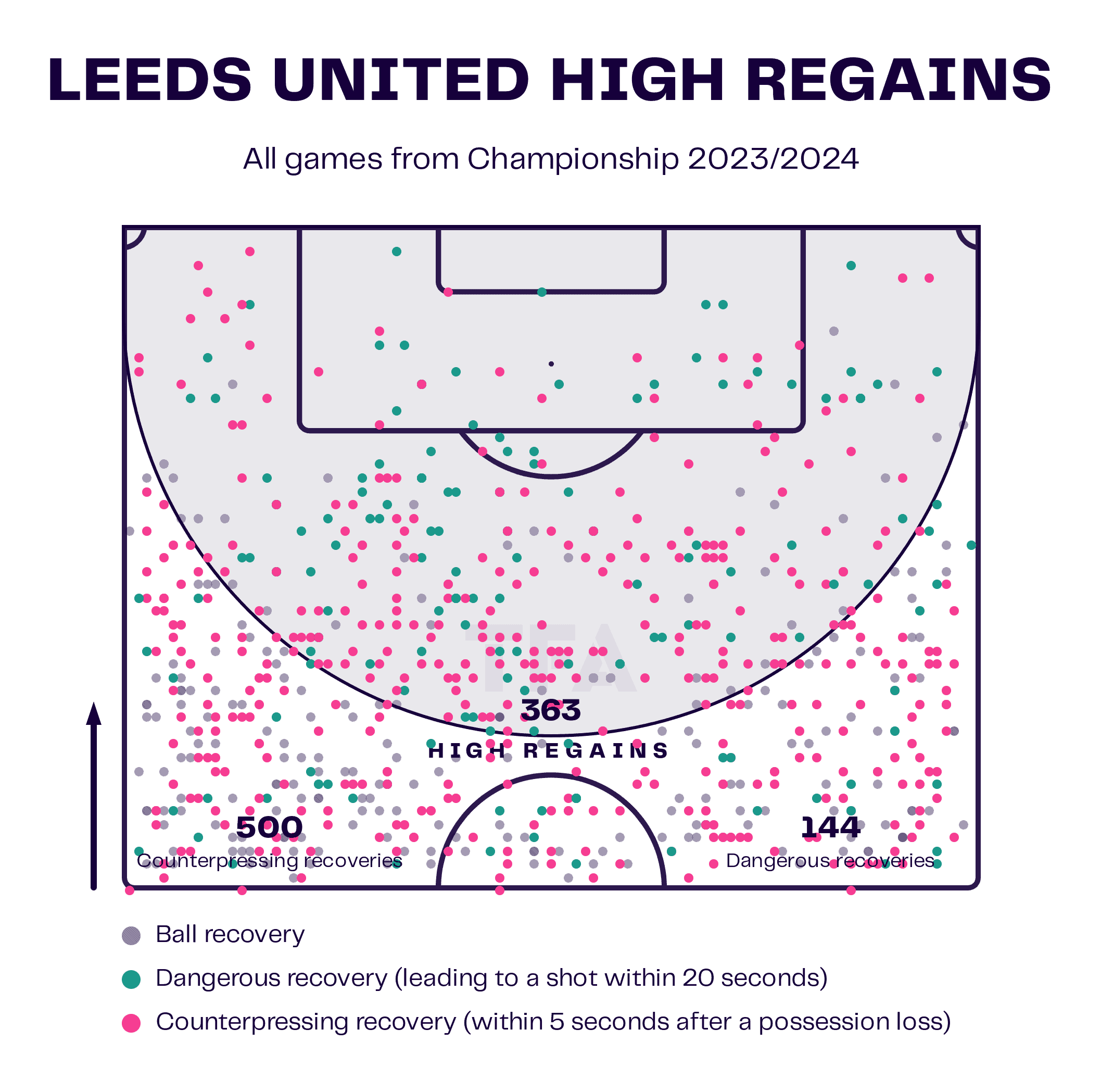
The young midfielder averages 8.92 recoveries per game, which increase the team’s time on the ball and are often crucial to achieving dominance in midfield.
Data profile
Gruev has impressed since the beginning of the year and his data only underlines his consistently strong performances.
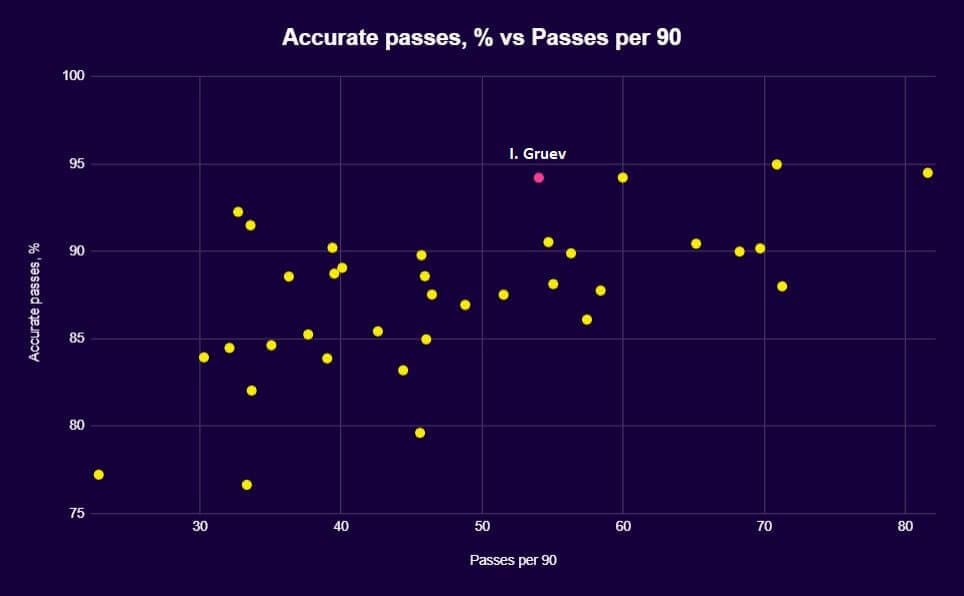
The above scatter plot compares the Accurate passes, % next to the Passes per 90 for all defensive midfielders with 10+ games in the Championship this season. It illustrates Gruev’s performance in both indicators, showing that his passing accuracy is among the highest in that position. Adding more, with his 94.2% pass accuracy, the 23-year-old is 8th among all players in all positions with 10+ games.
Gruev’s passing frequency is also above the average for the league. While he is not the most frequent passer, he compensates with his completion rate and manages to orchestrate play successfully.
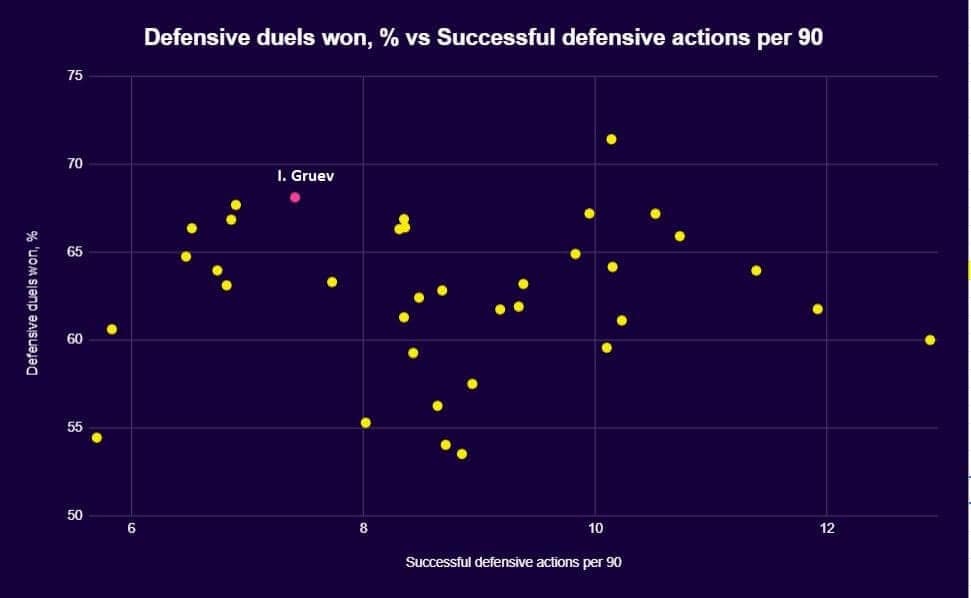
The midfielder has a defensive impact as well. The scatter plot above illustrates the Defensive duels won,% next to the Successful defensive actions per 90 for the same group of players.
Gruev has the second-highest defensive duel success rate (68.12%). That underlines his importance during transitions, as his composure and well-timed actions provide additional support and help the team block opposition attacks early on.
The Bulgarian’s number of successful defensive actions per game is under the average for that position, but that’s partially a result of his role and the team’s overall attacking approach. While he isn’t overly active defensively, the accuracy of his movement and actions make him an important figure centrally.
The biggest reflections of his solid performances, though, are not his individual achievements but the team’s overall performance. Leeds have improved in a few areas since Gruev started playing regularly.
As expected, he had the highest impact on their build-up-play and their passing numbers. The team’s pass completion rate has increased by 4.7% since he became a regular starter compared to the first half of the season.
The team have also improved their defensive record in 2024. They have conceded only once in their last eight games in the league.
Build-up-play impact
With quite a few midfield options, Farke’s initial plans for Gruev might have been different. However, with a few injuries on the agenda, he was forced to drop Ethan Ampadu in the backline, which opened a spot for the Bulgarian in the defensive midfield. He was paired with the other new addition, Glen Kamara, in a double pivot in Farke’s favoured 4-2-3-1 formation, which proved to be a successful move.
With Gruev orchestrating play centrally and Kamara supporting the wide players and advancing more frequently, the manager achieved a balanced midfield performance. The ex-Werder player provides freedom for the rest of the team thanks to his movement and precise passing. It gives many options in the offensive movement as the 23-year-old’s spatial awareness allows him to distribute the ball to quality areas. His anticipating skills shine not only defensively, as he anticipates his teammates’ movement successfully and initiates attacking play with his passes.
The next image shows the team’s usual setup when building up from the back. The full-backs have moved into an advanced position while the two centre defenders spread the ball out. Gruev usually stays deeper than Kamara, as illustrated.
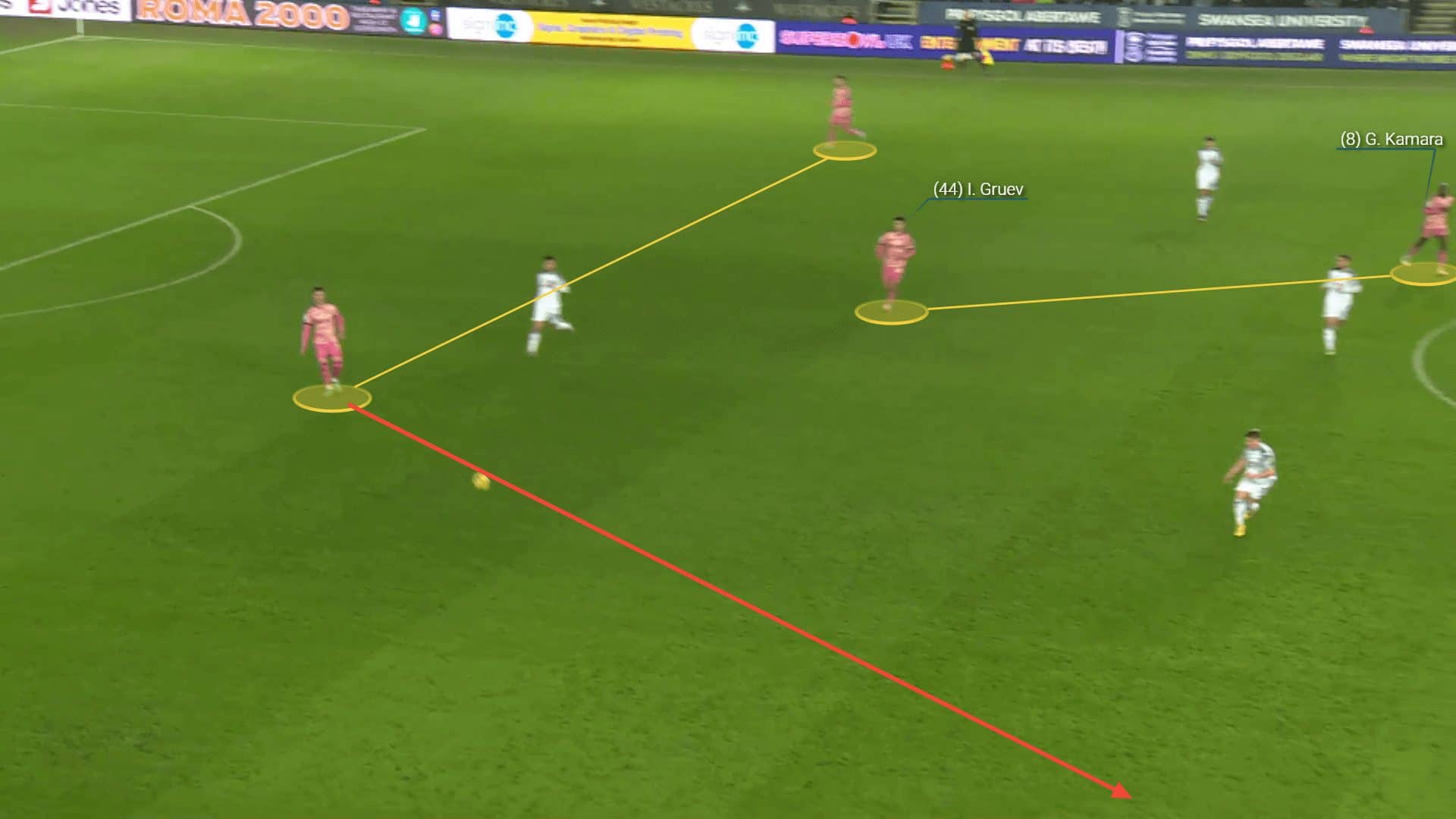
His positioning opens passing lanes, allowing the backline to bypass the press and advance the ball. He controls the midfield through his passes as he not only provides a passing option for ball retention in Leeds’ half but also aims to progress the ball. He likes to supply quality diagonal balls to their top goalscorer, Summerville, who can successfully take on defenders and threaten the goal.
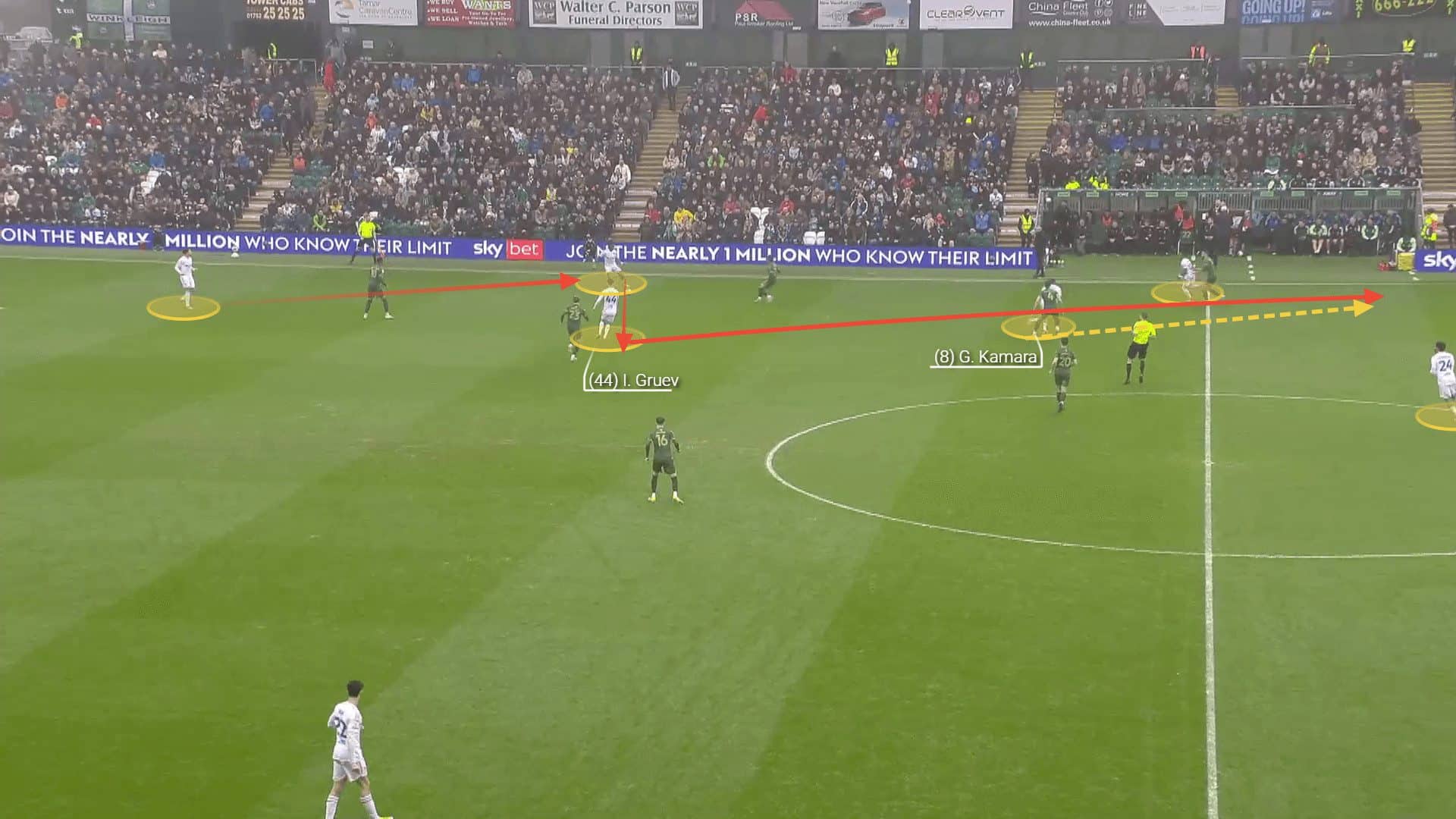
The image above shows his intelligence and ability to progress the ball. Once he received the ball, he saw the empty space on the flank and anticipated Kamara’s movement. He immediately passed the ball there, bypassing all three opposing players and trusting Kamara to take on his marker and deliver the ball to the final third.
The below comparison shows Leeds’ pass map before Gruev became a regular starter and after that. Of course, the change is not only solely a result of the players’ actions but is highly affected by them. We can see the change in shape, which shows an improved balance between both flanks and indicates that they have moved a little deeper as a unit, trying to cover their defensive areas better. That’s also the reason for the decrease in passing intensity in the advanced areas.
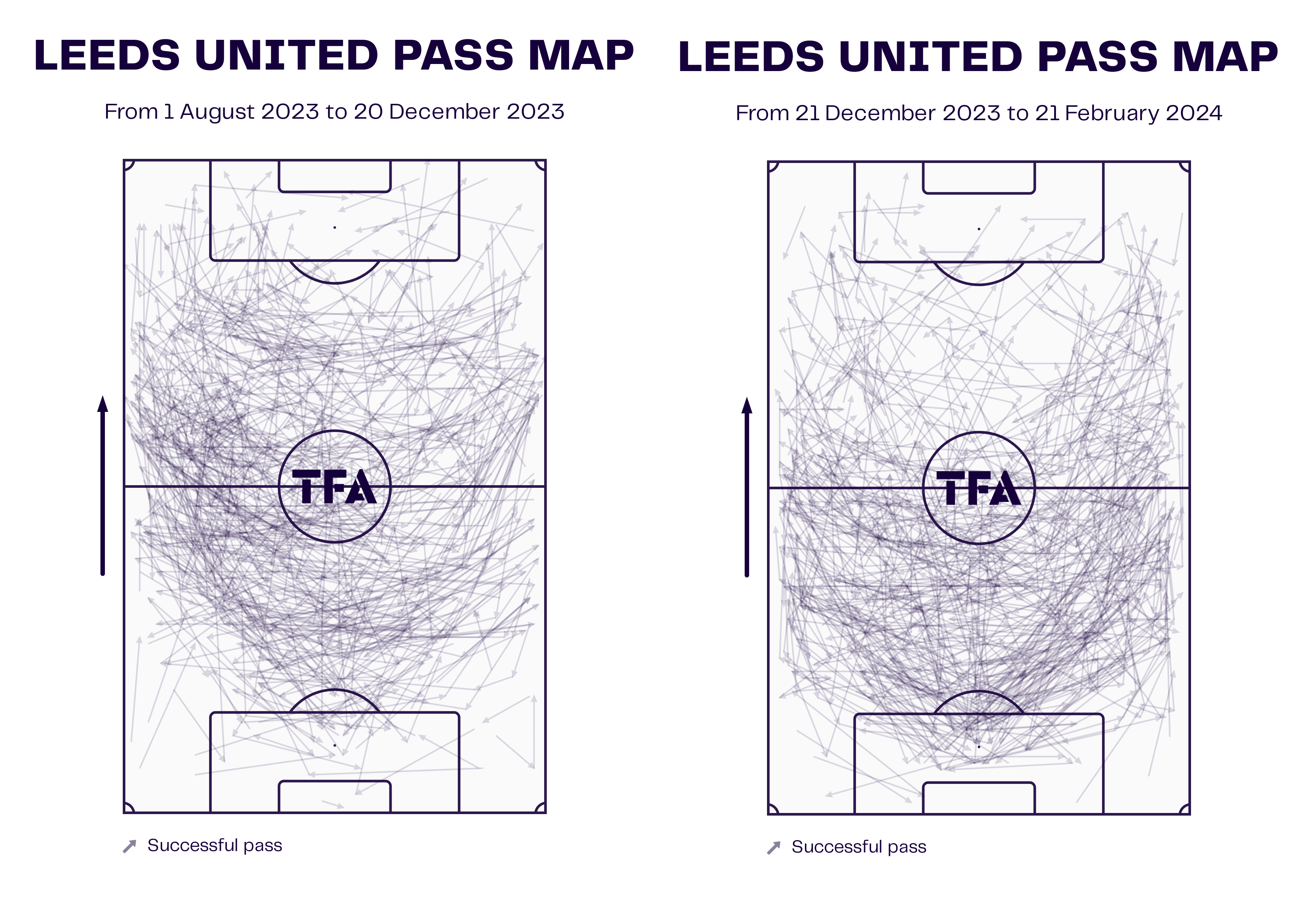
The Bulgarian team rarely relies on long balls as the team aims to advance the ball through short pass combinations and relies on ball retention instead of direct play. His technique and composure allow his teammates to move off the ball and exploit free spaces.
Both his and Kamara’s movement gives the full-backs the chance to move forward and provide the opportunity for a link-up-play in order to bypass the opposing pressing lines.
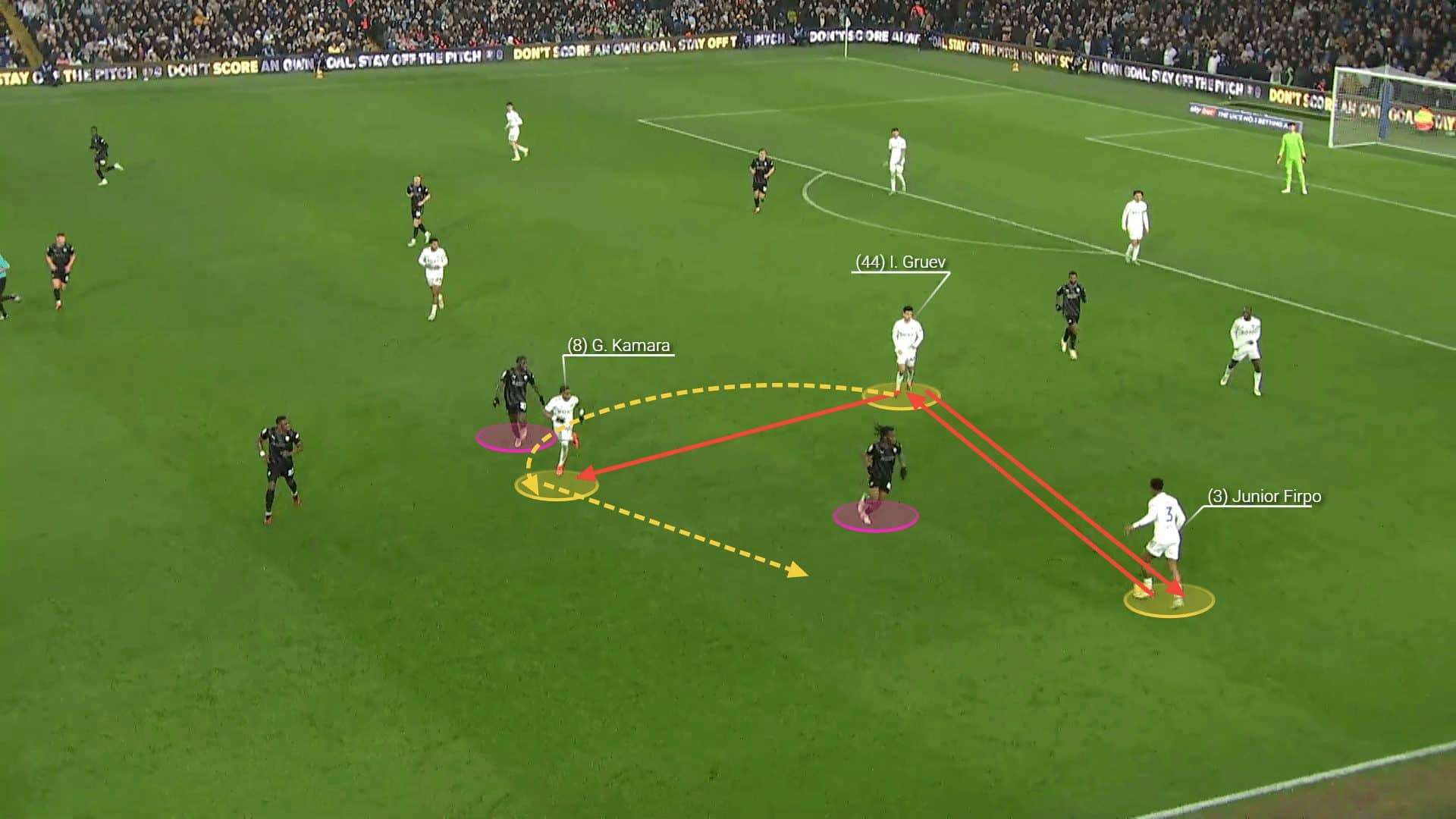
Above is an example of Leeds’ successful ball progression. Gruev, Junior Firgo and Kamara made a series of one-touch passes to bypass the press and advance the ball. Gruev’s movement here was crucial. After his one-two with Firgo, he moved into Kamara’s position to become uncovered for a split-second and receive the ball to move it forward.
Gruev’s positioning is vital for Leeds’ successful counter-attacking actions as well, as his positional and spatial awareness allow him to receive the ball and distribute it to quality areas quickly.
Additionally, Farke started relying on Gruev for taking corners, as he provides more versatility in attacking set-play situations and provides an opportunity for the attack-minded players to overload the penalty area.
Off-the-ball contribution
Gruev’s impact off the ball is equally as valuable. His positioning and anticipation skills lead to successfully recovering possession and blocking the opposition’s attacks both through direct challenges and through pressing.
Thanks to his tactical intelligence, he quickly anticipates the opposing players’ movement and manages to react with well-measured actions. His defensive duels’ success is based on his concentration and ability to read the game. His 8.92 recoveries per 90 are nearly equal to his teammates’ numbers in the backline.
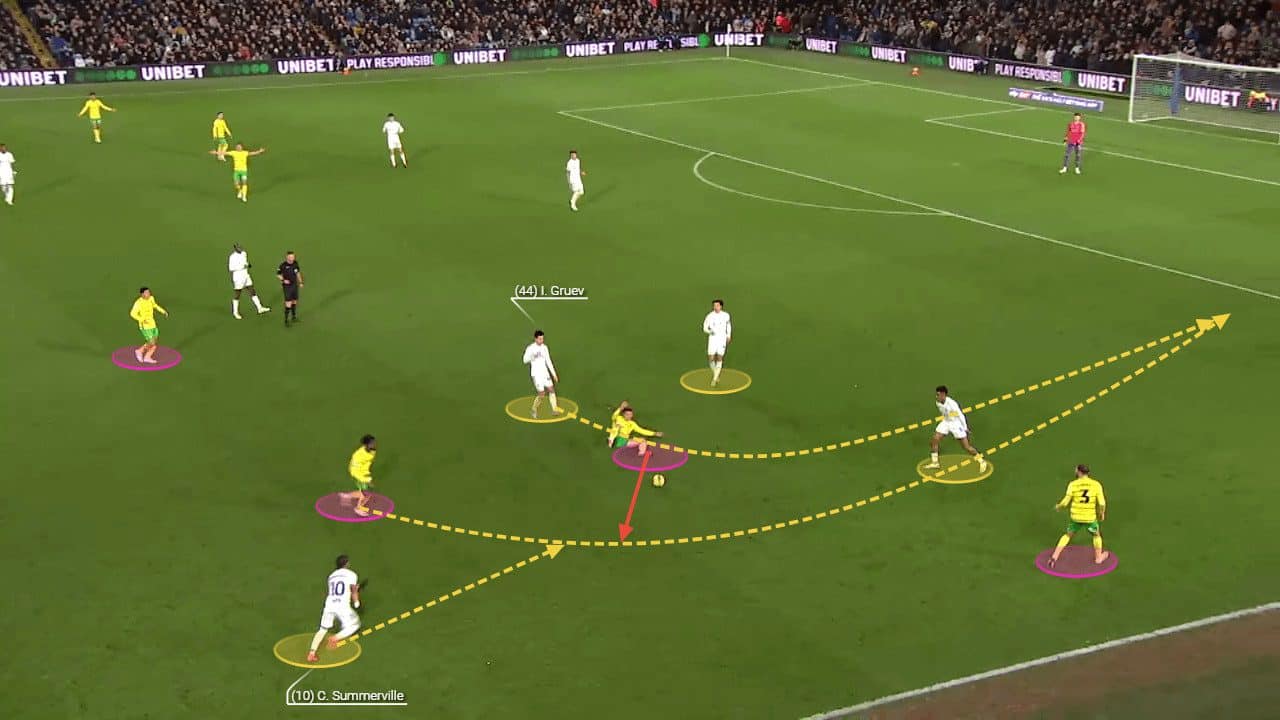
Gruev anticipated the opposing players’ movement in the above situation and quickly started his defensive positioning. He followed the ball carrier tightly to the box, giving his teammates the opportunity to press the rest of their opponents and avoid leaving gaps.
The defensive midfielder is resistant to press as well. Thanks to his close control and composure, he rarely loses possession, which gives the team extra central security and the ability to dominate the game and progress the ball successfully. He is the Leeds player with the fewest ball losses per game (4.08 p90), which is very impressive considering the time he spends on the ball and the pressure he endures.
Conclusion
The competition on Ellen Road is real, but as our analysis showed, Ilia Gruev has all the qualities needed to earn a regular starting spot at the base of the midfield. The 23-year-old’s significant improvement and consistency might get him under the radar in the summer. Farke, though, would be hesitant to let him go, especially if Leeds get the promotion, as he might be the key figure to keep them in the highest level of English football.

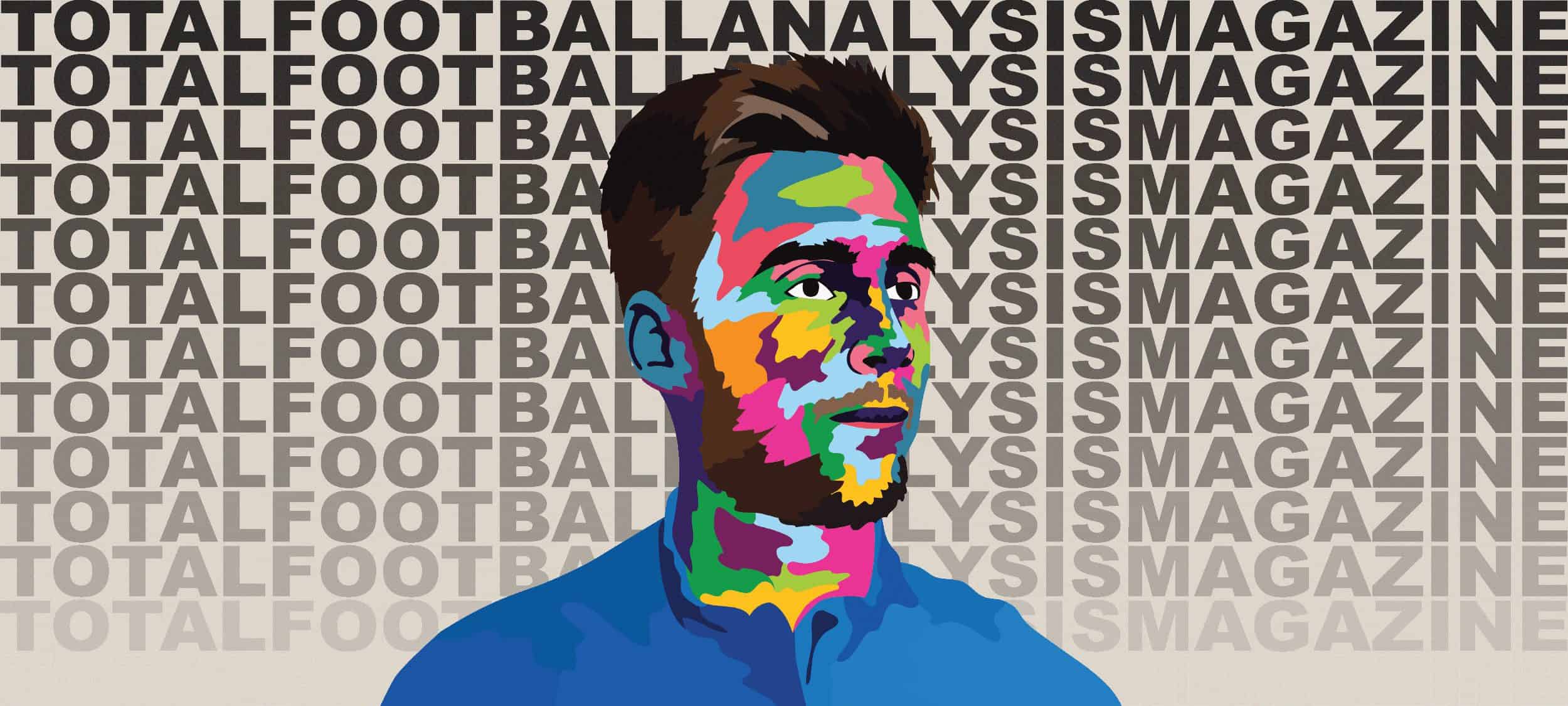




Comments